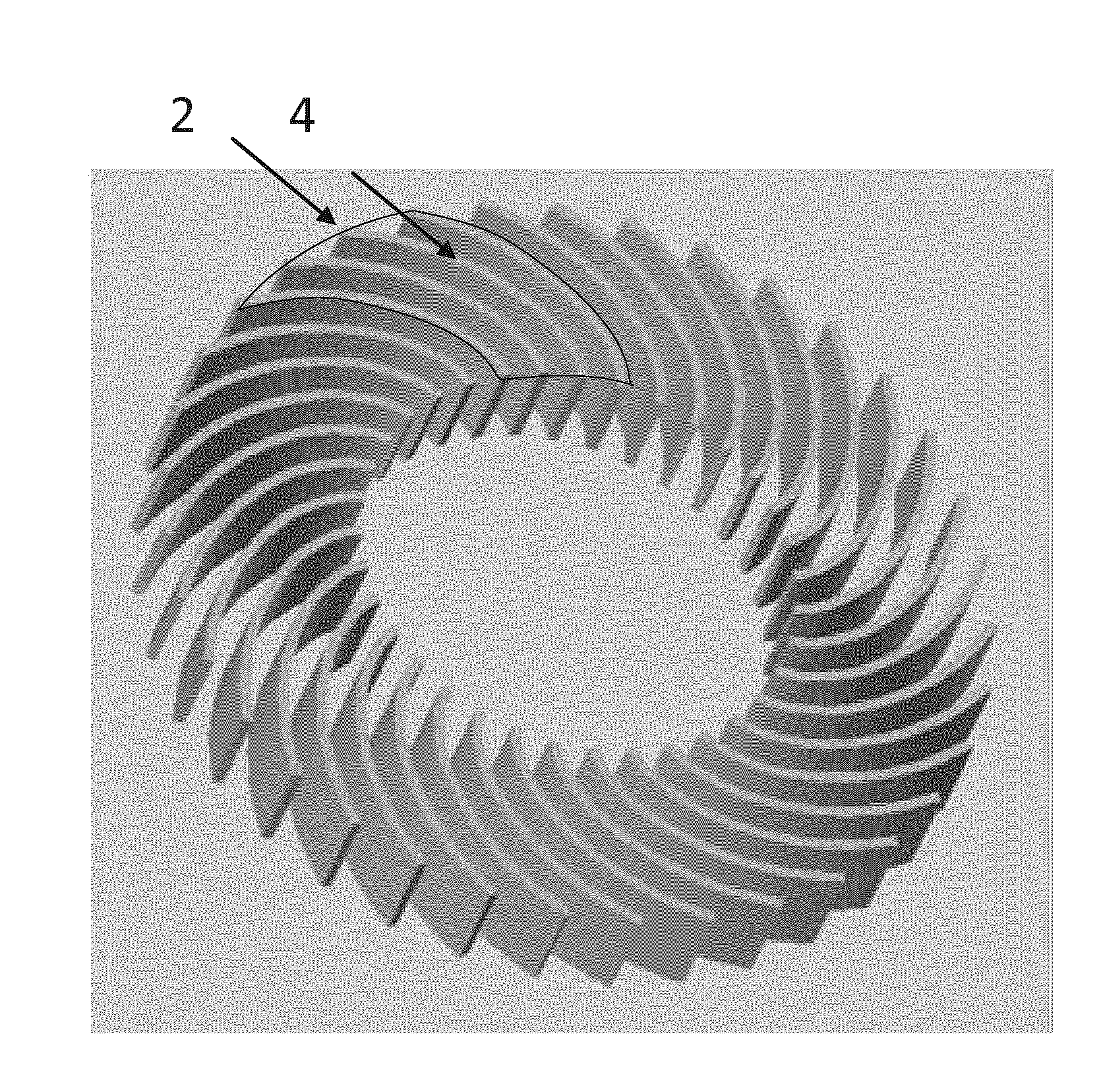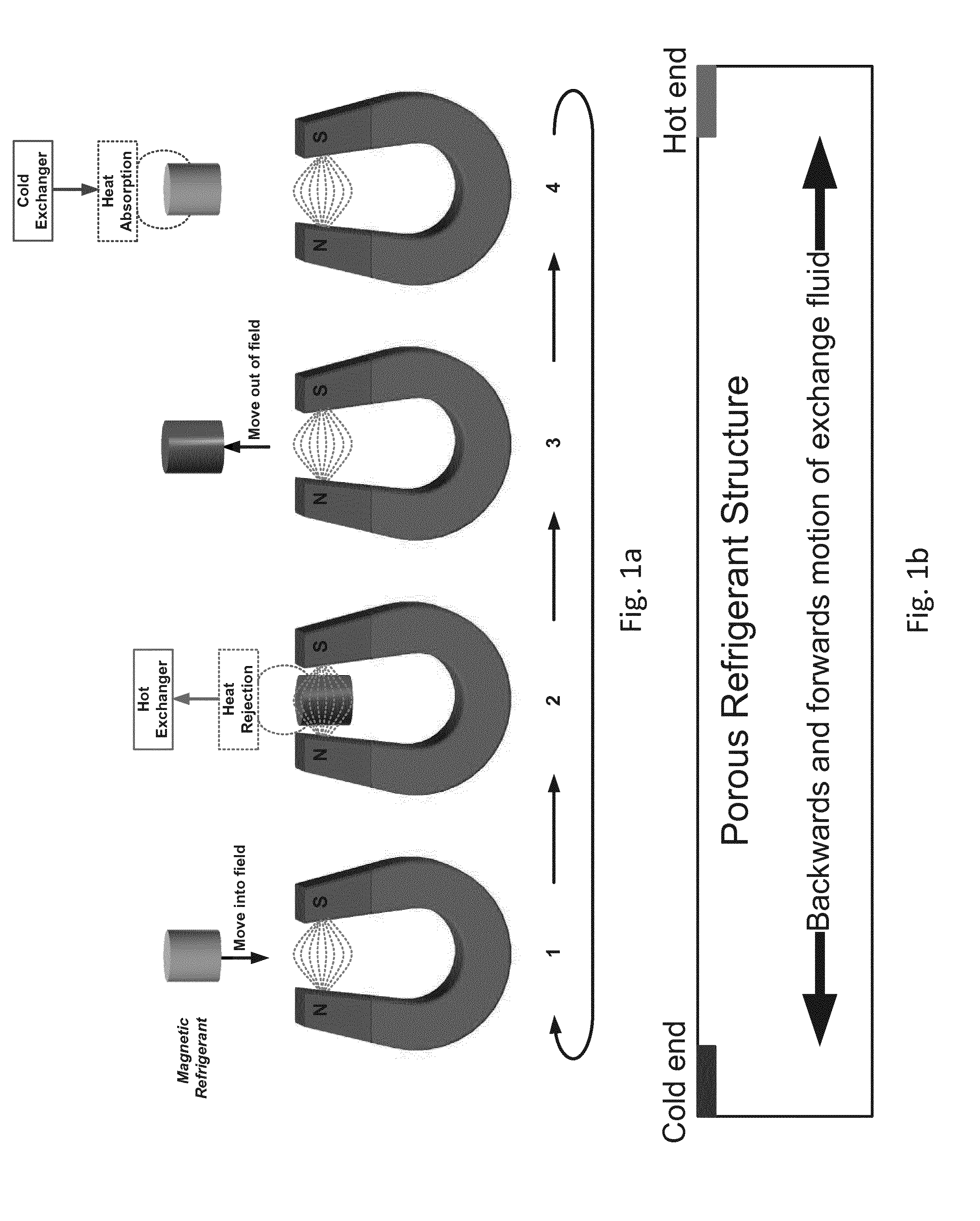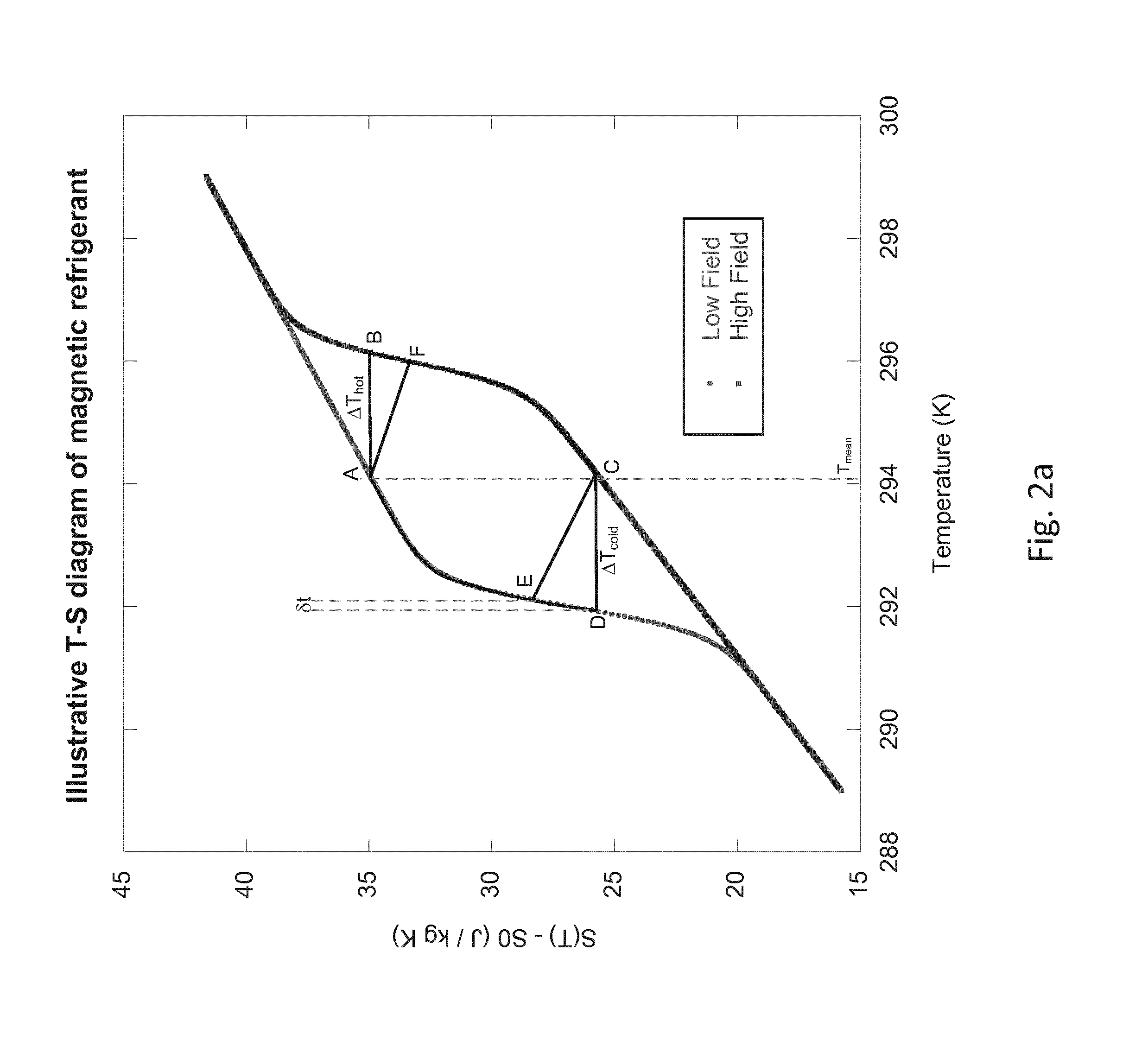Multi-Material-Blade for Active Regenerative Magneto-Caloric and Electro-Caloric Heat Engines
a multi-material blade and active regenerative technology, applied in the direction of machines using electric/magnetic effects, sustainable buildings, operation modes, etc., can solve the problems of low frequency, low operating speed, heavy and expensive solution per watt of cooling, etc., and achieve the effect of reducing the loss in the system
- Summary
- Abstract
- Description
- Claims
- Application Information
AI Technical Summary
Benefits of technology
Problems solved by technology
Method used
Image
Examples
second embodiment
[0140]FIG. 7 shows one of a plurality of elements 2 of another second example of the present invention. The example is similar to and compatible with the first example, since again plates 4 can be stacked to form the plurality of elements 2. The blade body 1 of the second embodiment exhibits a cross-section that has regions of different porosity in one direction, which is in FIG. 7 the vertical direction. The regions of different porosity are separated from each other and defined by a sudden jump in porosity that is at least 10%, but is preferably at least 20%, more preferably at least 30%. In FIG. 7 plates 4 that represent regions of low porosity (the porosity can even be zero, but can also be of finite value) are alternatingly stacked on top of each other with porous layers 19 in between. The porous layers 19 form the dedicated channels 3 as well as the spacers 5. Exchange fluid will preferably flow through the region with the higher porosity (open structure), in the case of FIG. ...
first embodiment
[0156]FIG. 17 shows an example of how a Multi-Material-Blade according to the present invention, in particular the first embodiment, can be fabricated. In general a blade body 1 is formed of a plurality of elements 2, wherein each of the plurality of elements 2 is made from a different magneto-caloric or electro-caloric material. The plurality of elements 2 are arranged along the length of the blade body 1, and dedicated channels 3 are created that penetrate the blade body 1. Finally a mixing structure and / or a hydrophobic coating layer can be provided to each of the dedicated channels 3.
[0157]In FIG. 17 each of the plurality of elements 2 is formed by stacking a plurality of plates 4 on top of each other. Each of the plurality of plates 4 is formed by aligning sub-plates 16 in a frame 17, applying strips and dots 18 on the sub-plates and baking the aligned sub-plates 16 together with the frame 17, in order to form plates 4. Then the plates 4 are stacked on top of each other with sp...
PUM
 Login to View More
Login to View More Abstract
Description
Claims
Application Information
 Login to View More
Login to View More - R&D
- Intellectual Property
- Life Sciences
- Materials
- Tech Scout
- Unparalleled Data Quality
- Higher Quality Content
- 60% Fewer Hallucinations
Browse by: Latest US Patents, China's latest patents, Technical Efficacy Thesaurus, Application Domain, Technology Topic, Popular Technical Reports.
© 2025 PatSnap. All rights reserved.Legal|Privacy policy|Modern Slavery Act Transparency Statement|Sitemap|About US| Contact US: help@patsnap.com



